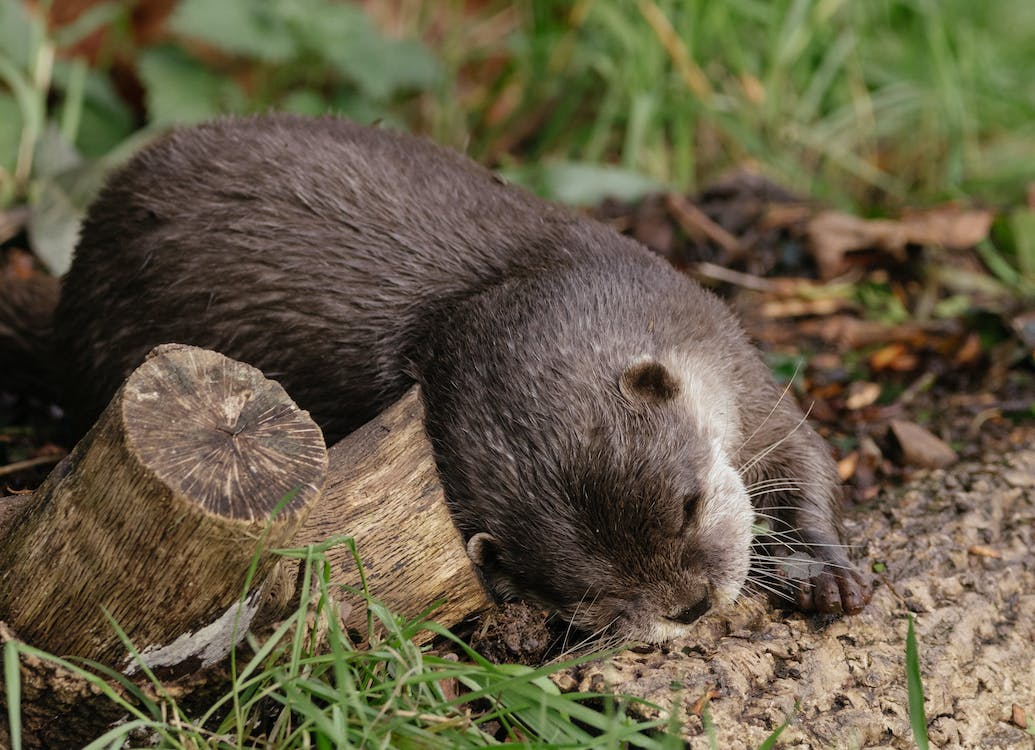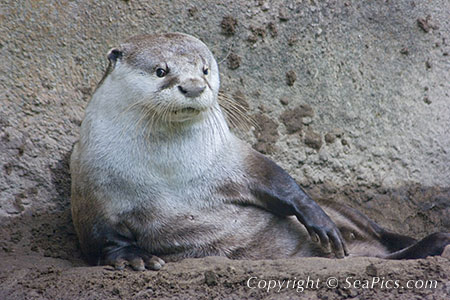It is a vigorous, curious, but clever otter, the second-largest freshwater otter in the African range and the third-largest in the entire world. The species got its name from its clawless feet but webbed feet, which allows its swim effectively in different conditions. While they are generally a freshwater species, they may thrive in marine environments, provided there is a fresh drinking water source.
Read further to know more about the African Clawless Otter.
What is an African Clawless Otter?
African Clawless Otter (Aonyx capensis), also called the Cape Clawless Otter or the Groot Otter is a large otter species found in much of sub-Saharan Africa. It thrives mostly near permanent water bodies in lowland forest areas, and savannas, surrounded by ample lush vegetation. They are absent in arid regions. These otters have clawless feet, but partly webbed. Their genus name “aonyx,” came from the prefix “a, meaning “without or sans” and “onyx,” implying “hoof or claw.”
Its seven levels of classification are as follows:
Kingdom: Animalia
Phylum: Chordata
Class: Mammalia
Order: Carnivora
Family: Mustelidae
Genus: Aonyx
Species: A. capensis
African Clawless Otter Physical Description
African Clawless Otter is the second largest freshwater otter species, growing 45-64 inches or 113 to 163 centimeters and weighing from 12 to 21 kilograms or 26 to 46 pounds. Males are relatively larger than the females, with some otters weighing up to 36 kilograms or 80 pounds.
These otters are renowned for their dark brown, luxurious coat, which is silky both in appearance and in touch. Not only is it appealing, but it is specifically designed to keep these otters dry and warm. The hair is dense, short, and composed of two different hair types that keep the water out and insulates them when swimming.
Meanwhile, their clawless yet webbed back feet give them more power when treading in water, and their tails serve as their rudders. White markings can be observed on the sides of their face, lower ears, throat, upper lips, and belly. These otters are also blessed with long whiskers, allowing them to detect prey, even in darker conditions.
Lastly, African Clawless Otters are nimble-fingered, with their hands boasting opposable thumbs, enabling them to handle food items effectively. On the other hand, their teeth are strong enough to crush shells of crabs, lobsters, and other crustaceans.
Where can they be spotted?
African Clawless Otters are the most common otter in sub-Saharan Africa, occurring in many suitable habitats from Senegal, to Ethiopia, down to South Africa, except for the Congo Basin. These otters thrive in an array of freshwater habitats, such as lakes, rivers, streams, estuaries. They can also live in marine water bodies, such as along rocky seashores, provided that there is a freshwater source for drinking and washing. The species love shallow waters about 1.5 meters deep, surrounded by thick vegetation.
Interesting Facts You Should Know About the African Clawless Otter
African Clawless Otters primarily feed on worms, insects, frogs, fish, abalone, lobsters, and crabs. Occasionally, they may also eat geese, ducks, coots, swans, shrews, reptiles, and mollusks. They are agile hunters, and pursue their prey fast, consuming them after. However, they may also bring food they caught to the shore before eating them. Their long whiskers allow them to detect vibrations from prey around them, both inland and in water. As fervent hunters, they may also forage on rocks and under tree logs to search for any available food.
These otters spend most of their time in the water. Going inland is not an excellent choice for them as they become relatively slow and clumsy. Moreover, their predators, such as Nile crocodiles and eagles await, making it safer to be in the water. Plus, they need it to keep their bodies cool.
While generally solitary, African Clawless Otters can be observed as part of clans composed of 4 to 6 individuals, consisting of two to three adults and their offspring. Their group has a given range, marking it with the strong scent from their anal glands, and providing each individual with their own space within the territory.
Within the group, these otters are energetic and playful, mostly seen swimming, play-fighting, or using anything around them, even their food, for playing. Otherwise, they are observed basking under the sun or shade. They communicate using an array of methods, such as moans, grunts, mews, and whistles. At night, they become more active when they forage for food.
Their breeding season usually occurs during December, linked with the rainy season in Africa. Pairs are separated and only meets during the meet season, and then part ways thereafter. The gestation period usually lasts about 60 days, with the female conceiving 1 to 5 pups. She will rear the offspring for about two months, in which she will guide them on how to swim and fish. Juveniles will reach their full-grown size after a year, leaving their mother to be with other groups around the area.
Significant threats to African Clawless Otters’ population included hunting for their fur or being killed as they prey on livestock, or be regarded as problems animals. Overgrazing, human development, drainage of wetlands, and deforestation also result in the loss of their habitats. The number of individuals from the species appears to be decreasing, and they are currently classified as Near Threatened (NT) under the IUCN Red List of Threatened Species.
WILDLIFE PARKS AND RESERVES WHERE THIS SPECIES IS FOUND:


